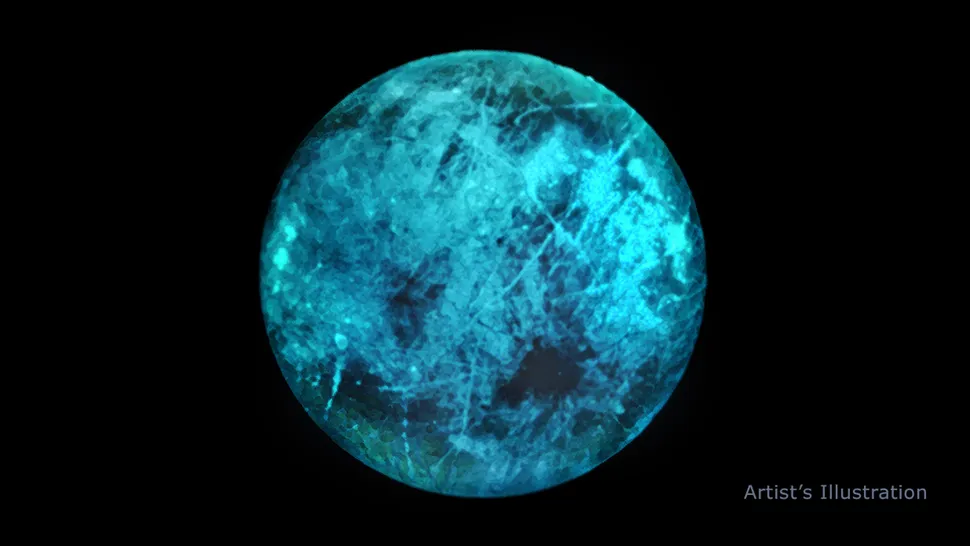Europa’s radiation-driven glow varies in color, hinting at the moon’s chemical diversity.
Key Takeaways
- Jupiter’s moon Europa likely glows in the dark due to intense radiation from Jupiter.
- The glow results from charged particles exciting molecules in Europa’s icy surface.
- The color of Europa’s glow changes with ice composition, revealing vital surface details.
- Europa’s glow could offer clues about the chemical makeup of its subsurface ocean.
- NASA’s upcoming Europa Clipper mission may detect this glow and further study its significance.
_________
Europa’s Glow: A Radiant Discovery
Jupiter’s icy moon Europa, known for its vast subsurface ocean, may literally shine in the dark. A new study reveals that intense radiation from Jupiter’s powerful magnetic field causes Europa’s icy shell to emit a faint glow. This discovery, made by scientists at NASA’s Jet Propulsion Laboratory (JPL), could provide essential insights into the moon’s surface composition and potential habitability.
Under typical conditions, Europa’s shadowed side would appear as dark as Earth’s moon. However, the relentless bombardment of charged particles from Jupiter excites the molecules in Europa’s ice, causing it to glow. To investigate this phenomenon, researchers created an instrument called Ice Chamber for Europa’s High-Energy Electron and Radiation Environment Testing. Using an electron-beam facility, they simulated Europa’s radiation conditions and tested various ice compositions, such as water ice mixed with salts like sodium chloride and magnesium sulfate.

The Glow’s Meaning and Future Exploration
The experiments revealed that Europa’s glow varies depending on the ice composition. Each type of ice produced a unique spectral signature, suggesting that the color and intensity of the glow could reveal the moon’s surface chemistry. These findings are particularly exciting because Europa’s surface likely interacts with its hidden ocean, offering a window into the ocean’s makeup and its potential to support life.
The glow’s color may range from greenish to bluish to whitish, influenced by the specific salts present in the ice. This insight could become a key tool for studying Europa’s habitability.
NASA’s Europa Clipper mission, set to launch in the mid-2020s, aims to explore these mysteries further. The spacecraft will orbit Jupiter and perform dozens of flybys of Europa, gathering data about the moon’s icy surface and the underlying ocean. The Clipper team is already examining this study to determine if the spacecraft’s instruments can detect Europa’s glow.
This discovery exemplifies how laboratory research can guide space exploration. As lead researcher Murthy Gudipati noted, “Our prediction goes back to a simple observation, and that’s what science is about.” The Europa Clipper mission may confirm these findings and help prepare for future missions, including a potential Europa lander designed to search for signs of life.





I don’t think the title of your article matches the content lol. Just kidding, mainly because I had some doubts after reading the article.